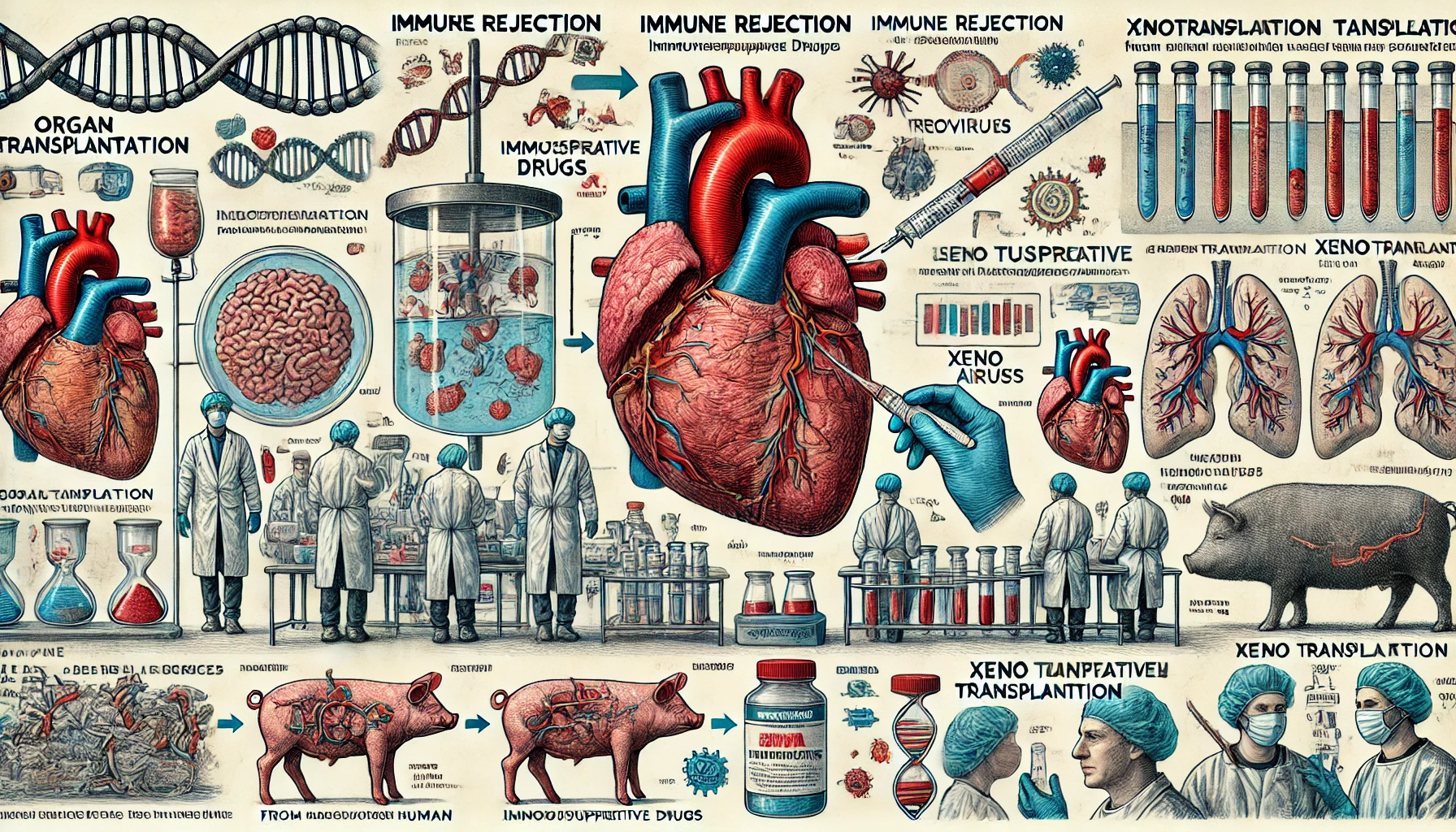Transplants are performed to replace cells, tissues, and organs in the body when they are damaged, and allogeneic and xenogeneic transplants and artificial organ substitutes are being investigated. Immunosuppressants and genetic modification are needed to address immune rejection, and technologies to eliminate endogenous retroviruses are under development.
Transplantation is performed to replace the body’s cells, tissues, and organs when they are damaged and no longer functioning properly. The cells, tissues, and organs that are transplanted are called grafts. If your own grafts or those of your identical twin aren’t available, you can have an “allogeneic transplant” with grafts from another person. However, the body will always reject a graft that is not genetically identical, because the body has an immune response to anything that is not its own.
Immune rejection is triggered by differences in the major histocompatibility complex (MHC) molecules that immune cells express on their surface. There are differences in MHC between individuals, and the greater the genetic distance between them, the greater the differences in MHC and the stronger the rejection. To combat this, immunosuppressive drugs are used, which suppress the immune response and increase the risk of disease infection. Since transplantation is expensive and the number of allografts available for transplantation is very limited, alternatives are being developed.
The first approach is to use “electronic artificial organs” such as artificial hearts. However, these are used to temporarily replace the function of an organ and have the disadvantage of requiring additional power and regular replacement of parts. They are not yet sophisticated enough to completely replace human organs. The technology is constantly evolving, and scientists are working on a variety of research to improve the performance of electronic prosthetic organs. For example, efforts include using biocompatible materials to minimize adverse interactions with organs and developing longer-lasting battery technology.
Next is “xenotransplantation,” which involves transplanting grafts from other animals that are similar to human tissues and organs into humans. However, xenotransplants are much more prone to rejection than allografts. In particular, natural antibodies in humans react to antigens expressed on cells of other species, causing hyperacute rejection and acute vascular rejection of xenografts.

There have been successful experiments with transplanting grafts from transgenic minipigs that have had the genes that cause these reactions removed. Mini-pigs have the advantage of having organs similar in size to those of humans and high reproductive capacity, allowing them to produce many individuals in a short period of time, so research is underway to develop xenografts using them. Another problem with xenotransplantation is endogenous retroviruses. Endogenous retroviruses are parts of an organism’s DNA that are believed to be derived from retroviruses. They do not have viral activity and are present in all mammals, including humans.
Retroviruses are viruses that contain their genetic information in RNA and possess reverse transcriptase enzymes to infect specific types of cells. Unlike other organisms that can only transcribe, which is the process of creating RNA from DNA containing genetic information, retroviruses enter the cells of other organisms and use reverse transcription to turn their RNA into DNA and infect the DNA of those cells. Then, like other viruses, they take on a host organism and use the host cell’s systems to replicate, multiply, and, under certain conditions, destroy the host cell.
However, there have been cases where reproductive cells such as sperm and eggs have survived retroviral infection. All the cells of the offspring derived from these cells are endogenous retroviruses. Endogenous retroviruses change their sequence due to mutations over generations and do not act as viruses in the cells they infect. However, if an endogenous retrovirus is isolated and injected into the cells of another species, it can be transformed into a retrovirus and infect those cells.
Therefore, technologies are being developed to effectively remove endogenous retroviruses contained in the DNA of minipigs. If successfully developed, this would greatly improve the safety of xenotransplantation and provide a life-saving opportunity for many more patients.
Much research is being done to develop the ideal graft, building on the progress made so far with alternative technologies. This research is being conducted in collaboration with experts in various fields such as biotechnology, medicine, and genetics, and it is expected that in the future, safer and more efficient transplantation techniques will be developed, giving hope to many patients.
 I’m a blog writer. I want to write articles that touch people’s hearts. I love Coca-Cola, coffee, reading and traveling. I hope you find happiness through my writing.
I’m a blog writer. I want to write articles that touch people’s hearts. I love Coca-Cola, coffee, reading and traveling. I hope you find happiness through my writing.